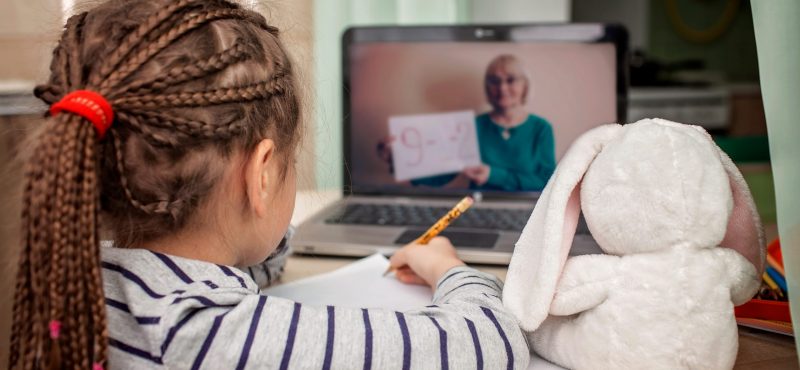No two ways about it: 2020 was a very difficult year. The pandemic – and the economic, social, and health effects it wrought – changed the lives of every single person on the planet. But in the midst of these difficult conditions, communities came together not only to lessen the effects of the crisis but also to connect in ways never achieved before. One of these was a series of initiatives designed to provide students with at-home broadband in order to make distance learning possible.
COVID-19 Exposes the Digital Divide
In the course of a few short weeks last March, over 100,000 schools closed down across the United States, forcing some 55 million students and teachers into an unprecedented transition to distance education. The problem quickly became evident: nearly 10 million of those students – overwhelmingly lower income and students of color – lacked the broadband connection necessary to keep up with their schoolwork. This digital divide threatened to aggravate historical inequalities based on income and race in the American educational system, along with existing technological disparities: even before the pandemic, one in five teens reported an inability to finish their homework because of a lack of reliable internet. In short, the stage was set for a situation in which those least able to afford to do so faced the threat of falling behind.
Making Connections Quickly
In the face of this challenge, a coalition of actors comprised of internet service providers, state and local governments, businesses, and community advocacy organizations swung into action. Thanks to $150 billion in emergency CARES Act funding, state, local, and tribal governments were able to devote resources, among other areas, to broadband and digital education. And thus, K-12 Bridge to Broadband was born: a partnership between NCTA – the Internet & Television Association and the national non-profit EducationSuperHighway (ESH) that enabled cable providers to work with school districts in order to identify students in need and acquire internet service for these families through sponsored service agreements.
Moving swiftly, some 12,000 schools were signed up for these agreements. As the problem reached every corner of the country, the solution had to do so, as well. In Louisiana, Cox Cable partnered with school districts and the Bernhard Family Foundation to bring connectivity to low-income parishes in New Orleans and Baton Rouge; in Oklahoma, it worked with the Tulsa School District, where 95% of students qualify for free and reduced lunch, to get some 23,000 families connected. In Chicago, Comcast launched its “Chicago Connects” program in partnership with the Chicago Public Schools, thanks as well to CARES funding and philanthropic support. In Iowa, meanwhile, Mediacom worked with the Waterloo School District to connect hundreds of families. And as hybrid and distance learning solutions continue throughout the 2020-2021 school year, the importance of these programs continues to be critical. You can follow the progress of this initiative and stay up-to-date on the latest partnerships on our related page.
A National Priority in 2021
The past year has made two things very clear: first, that connecting our students with reliable broadband needs to be a national priority and, second, that these programs are highly effective. Thanks to the confluence of public and private support, there is now a dedicated effort going forward, with funds allotted and structures in place. This stands to be further stimulated by the Emergency Broadband Benefit Program, a $3.2 billion broadband subsidy program for qualifying low-income households that was included in the coronavirus stimulus legislation passed at the end of 2020. The program, scheduled to last for six months, will allow for a $50 monthly discount off the retail price of broadband access and $75 on tribal land.
While there have been major strides to connect students during the pandemic, the problem does not affect students alone, and there is still much work to be done. For decades, millions of households, especially in remote parts of rural America have lagged behind while more populated parts of the country have raced ahead with faster and faster broadband. This disparity has to come to an end. To learn more, explore our rural broadband initiative or get involved now by signing our petition.
